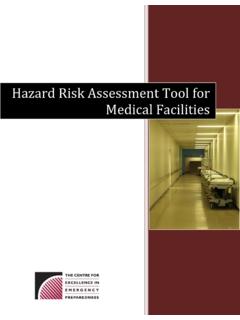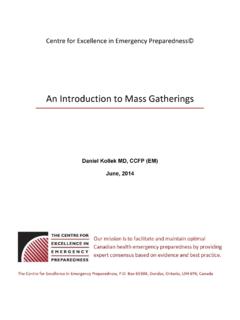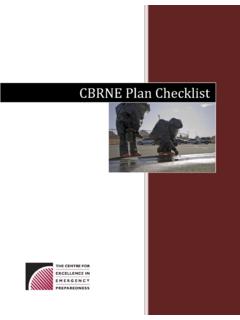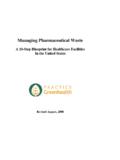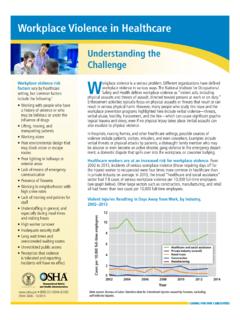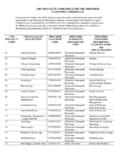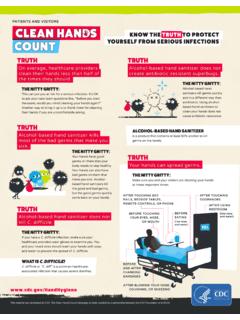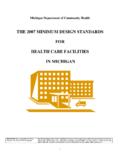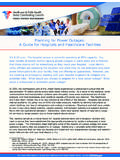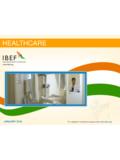Transcription of A TEMPLATE FOR HEALTHCARE FACILITIES - The …
1 Copyright Center for Excellence in Emergency Preparedness cbrne Plan checklist April 29, 2006 (FINAL COPY) 1 cbrne PLAN checklist : A TEMPLATE FOR HEALTHCARE FACILITIESC opyright Center for Excellence in Emergency Preparedness cbrne Plan checklist April 29, 2006 (FINAL COPY) 2 PREAMBLE Disasters and emergencies include a variety of hazardous situations that may occur inside or outside the organization. These include, but are not limited to, fires, natural disasters, biochemical and bomb threats, chemical spills, radiation exposure, threats of personal violence and power failures.
2 (CCHSA Standard ). In addition, new and emerging infections and industrial accidents such as train derailments or explosions/fires at nuclear plants may be threats to health care providers. HEALTHCARE FACILITIES play a vital role in the response to emergencies. Emergency Preparedness for HEALTHCARE FACILITIES includes elements of mitigation, preparedness, response, and recovery. Facility plans should take into account such factors as the appropriateness and adequacy of physical FACILITIES , organizational structures, human resources, and communication systems; and as such, need a tool to assess their readiness.
3 The purpose of this document is to allow HEALTHCARE FACILITIES to assess their readiness to deal with disasters. This is not a planning tool per se, but, once the Facility s plan is in place, it will provide a means to review the plan and identify gaps. This checklist makes liberal use of a variety of resources either freely available on the Internet or provided by co-workers. In particular, we have made use of the checklist provided by Denys J. Carrier, RN, Leader, Emergency Preparedness Program, Providence Health Care, BC and that developed by Booz-Allen and Associates for the Agency for HEALTHCARE Research and Quality.
4 Every facility is different and the nature of threats to specific FACILITIES varies over time. For this reason, the document MUST, to some degree, remain general. Users must refer to their risk-assessment process and the current standards of care. A variety of references are appendices to this document, to be of use to the reader in this regard. Assessment items should be answered as follows: Y = yes; N = No; N/A = Not applicable; U= Unsure (for every U , the Facility must identify someone who will clarify the response). In some cases numerical information was felt to be more useful.
5 The majority of the questions are in the Yes/No/Not Applicable (N/A) format. While it is assumed that a yes answer means the issue raised by the question has been addressed, the converse is not true. A No or N/A answer may mean that the Facility has a gap in its readiness or it may be that the answer was a product of an active decision. This document is not meant to be proscriptive but rather one that is thought-provoking and generates discussion. The term HEALTHCARE Facility or facility is used throughout this document. The definition of FACILITIES , clinics, rehabilitation or extended care FACILITIES , retirement homes, long-term care home, and other HEALTHCARE institutions may vary from region to region, and it is the intention of the authors of this document to provide a reference tool that can be generalized across multiple platforms of HEALTHCARE delivery.
6 The primary target audience is traditional FACILITIES with in-patient units, particularly those that have an Emergency Department; as such, not all sections of this document are applicable to all FACILITIES . An institution may choose not to address a specific issue in their disaster plan because their risk analysis reveals a very low occurrence or a negative impact, or other Copyright Center for Excellence in Emergency Preparedness cbrne Plan checklist April 29, 2006 (FINAL COPY) 3 considerations. Planners in each facility should decide which aspects of their disaster plan they choose to prepare for and those they choose to assess using this tool.
7 The checklist is designed to provide FACILITIES with questions that stimulate assessment and dialogue with key stakeholders within the FACILITIES as well as at the local level and beyond. The checklist divides the assessment into sections, however many of them overlap and may be grouped in differing manners according to the organization and operation of individual FACILITIES . Although comprehensive, the facility assessment will undoubtedly identify new questions and considerations. There are episodic redundancies in this questionnaire. These redundancies are intentional so as to: (a) provide for internal validation; and (b) provide for sections of the tool to stand-alone and be given to separate individuals within the facility s organization.
8 Redundant questions are cross-referenced in the document. This document has 24 sections, each of which may be filled in by a different individual, however, one lead person should be designated to provide overall responsibility for ensuring that all information is complete. The completion of this form and the development and implementation of a full plan is a facility-wide activity, requiring co-operation from many areas or departments. The term Incident Command System is used referring to Incident Management Systems (IMS), Incident Command Systems (ICS), Hospital Emergency Incident Command System (HEICS), and other similar terms.
9 For more information please see References. At various points in this document references are made to other documents from the library of the Centre for Excellence in Emergency Preparedness (CEEP). Those documents that are ready, are available free of charge on the CEEP website ( ). All documents are the properties of CEEP . Users may freely use all CEEP material, provided that: (a) materials are not modified unless such changes are identified as not being part of the original CEEP document; and (b) credit is given to the source. Copyright Center for Excellence in Emergency Preparedness cbrne Plan checklist April 29, 2006 (FINAL COPY) 4 The Process of developing this document was as follows: 1.
10 Needs assessment/identifying the absence of a Canadian HEALTHCARE Facility tool for readiness (2003). 2. Literature search (2004). 3. First draft (2004). 4. First draft reviewed and compilation of feedback (2004). 5. Second literature review and extraction of relevant documents (2005). 6. Panel review of literature search results and of edited initial tool (2006). 7. Compilation of panel s feedback and final draft (2006). 8. Final draft review by the panel (2006). 9. Trial of tool at test sites (PENDING). 10. Incorporation of feedback from test sites (PENDING). 11.
